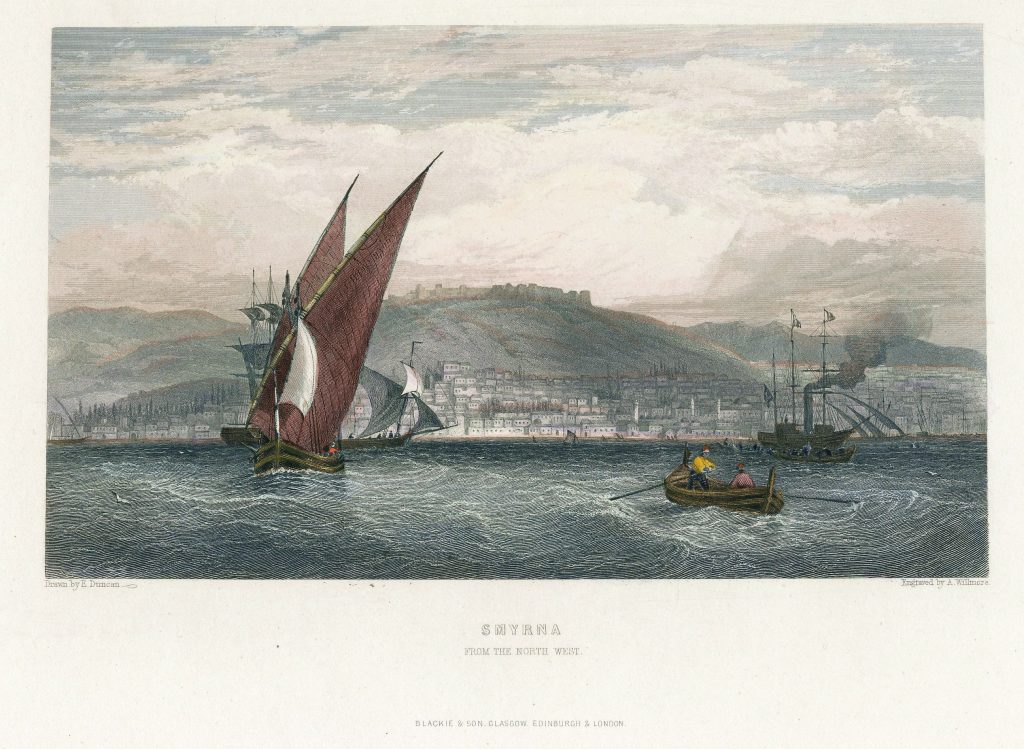The letter to the church at Smyrna (The Letters to the Seven Churches, pg. 12).
“The church of Smyrna (a very ancient, still flourishing commercial city in Ionia, beautifully located on the bay of Smyrna) was externally poor and persecuted, and had still greater tribulation in view, but is cheered with the prospect of the crown of life. It was the second century ruled by Polycarp, a pupil of John, and a faithful martyr.”
Philip Schaff, History of the Christian Church, Vol. 1, p. 380.
“Smyrna : In ancient times one of the most important and now by far the greatest of the cities of Asia Minor, has preserved an unbroken continuity of record and identity of name from the first dawn of history to the present time. … The situation of Smyrna on the path of commerce between Lydia and the west raised it during the 7th century [BC] to the height of power and splendour. It lay at the head of an arm of the sea, which reached far inland and admitted the Greek trading ships into the heart of Lydia. One of the great trade routes which cross Anatolia descends the Hermus valley past Sardis, and then diverging from the valley passes south of Mt. Sipylus and crosses a low pass into the little valley, about 7 miles long and 2 broad, where Smyrna lies between the mountains and the sea. Miletus, and later Ephesus, situated at the sea end of the other great trade route across Anatolia, competed for a time successfully with Smyrna, but both cities long ago lost their harbours, and Smyrna remains without a rival. … The beauty of the [ancient] city, clustering on the low ground, and rising tier over tier on the hillside, is frequently praised by the ancients and is celebrated on its coins.
“In the Roman period … Smyrna vied with Ephesus and Pergamum for the title ‘First (city) of Asia.’ A Christian church existed here from a very early time, having its origin in the considerable Jewish colony. Polycarp was bishop of Smyrna and was martyred there AD 155.”
“Smyrna,” The Encyclopaedia Britannica, Vol. 25, pgs. 281-282.

Leave a Reply